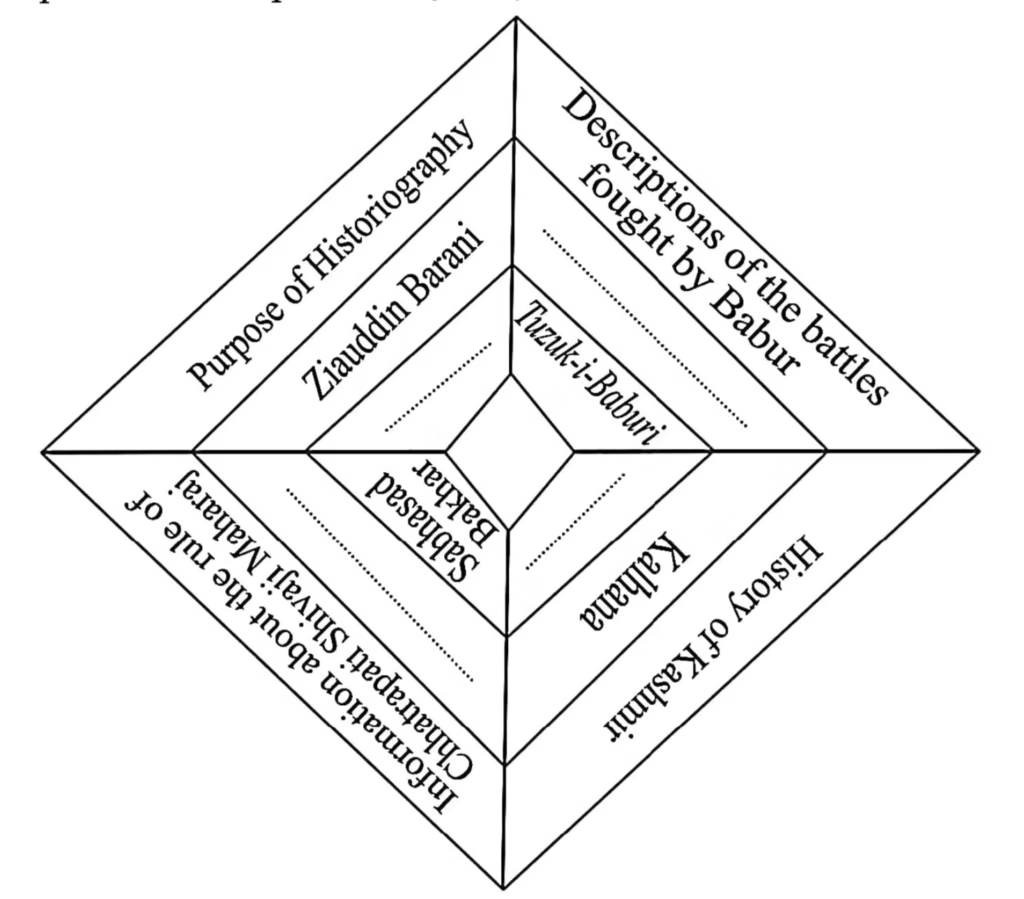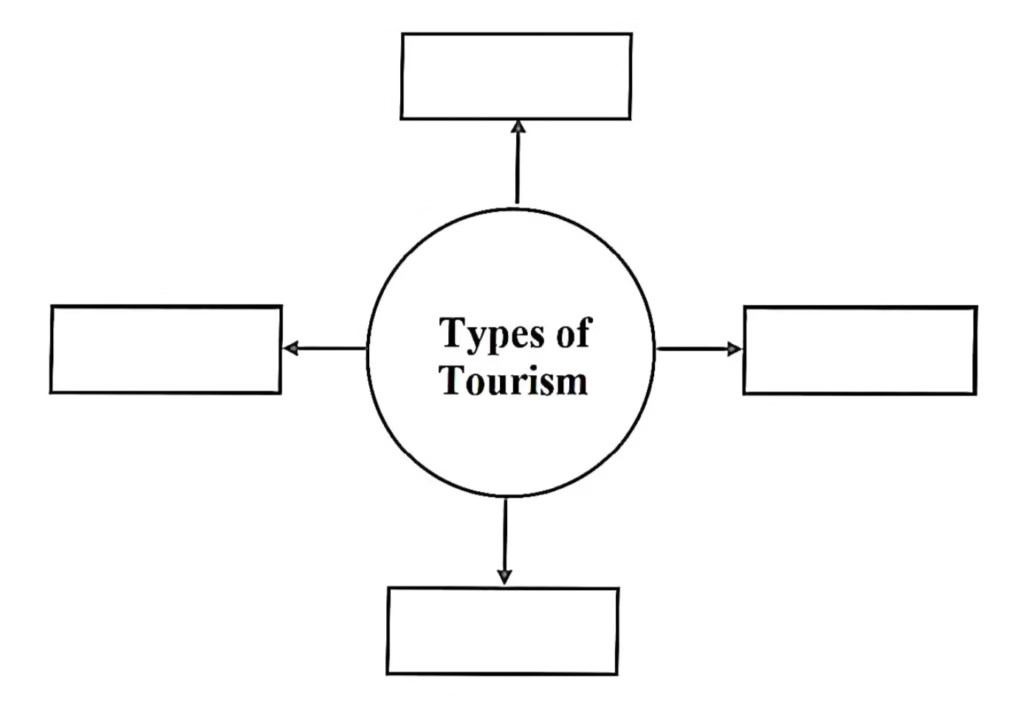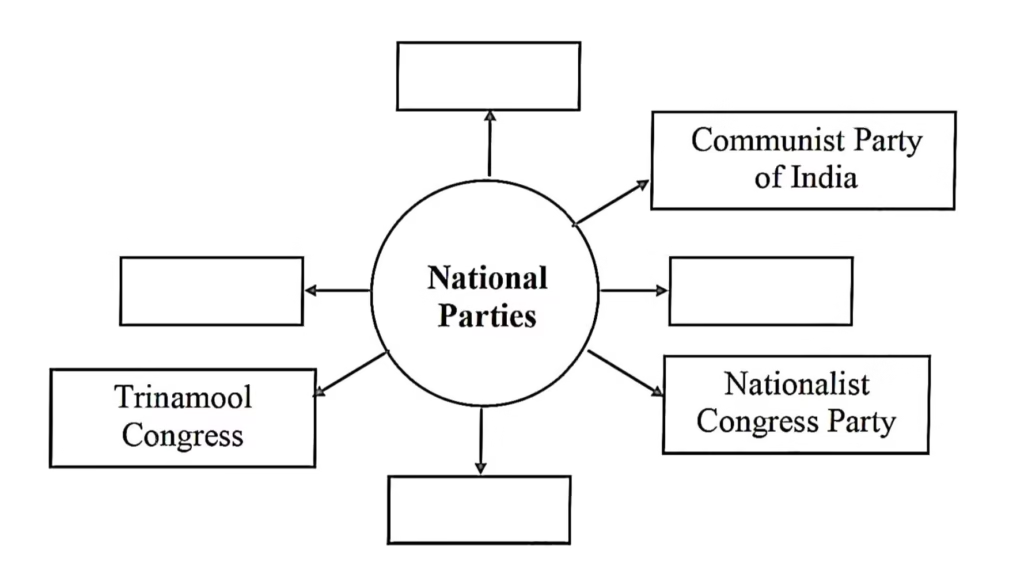Q.1. (A) Choose the correct option from the given options and complete the statements. [ 3m ]
- It may be said that was the founder of modern historiography.
(i)Voltaire
(ii) René Descartes
(iii) Leopold Ranké
(iv) Karl Marx - The saw the rise of Mathura school.
(i) Kushana period
(ii) Gupta period
(iii) Rashtrakuta period
(iv) Maurya period - ..…. at Kolkata is the first museum in India.
(i) Government Museum
(ii) National Museum
(iii) Chhatrapati Shivaji Maharaj Vastusangrahalay
(iv) Indian Museum
Answers :
(1)It may be said that Voltaire was the founder of modern historiography.
(2)The Kushana period saw the rise of Mathura School.
(3)Indian Museum at Kolkata is the first museum in India
(B) Identify the wrong pair in the following and write:
| Sr. No. | Column ‘A’ | Column ‘B’ |
| 1 | Rene Descartes | Discourse on the Method |
| 2 | Karl Marx | Das Capital |
| 3 | George Wilhelm Friedrich Hegel | Reason in History |
| 4 | Leopold von Ranke | “The Histories |
| Sr. No. | Column ‘A’ | Column ‘B’ |
| 1. | Matheran | Hill Station |
| 2. | Tadoba | Rock-cut Caves |
| 3. | Kolhapur | Pilgrim Centre |
| 4. | Ajanta | World Heritage |
| Sr. No. | Column ‘A’ | column B |
| 1. | Mallakhamb | Outdoor game based on physical skills |
| 2. | Water Polo | Water sport |
| 3. | Skating | Adventurous ice sport |
| 4. | Chess | Outdoor game |
Answer
(1) Leopold von Ranke—The Histories
(2)Tadoba—Rock-cut Caves
(3)Chess—Outdoor game
Q.2.(A)Complete the following activity according to the given instructions. (Any Two) [ 4M]
- Complete the following Activity ( 2m)

2. Complete the following activity.

Answer:
1. IshwardasNagar, Bhimsen Sexena, Khafi khan, Niccolao manucci,
2. International Tourism, Health Tourism, Historical Tourism, Sport Tourism.
3. Complete the following chart:
| Bhajan | Bharud | |
| Characteristics | _________ | ________ |
| Examples | _________ | _________ |
2. (B) Write short notes on. ( Any two) ( 4m)
- Art
- The role of newspaper in the Indian struggle for independence.
- Dictionaries
Answer : 1) ART i. The beautiful creation which is a result of the natural human instinct to share his experience, wisdom and emotions is acknowledged as ‘Art’.
ii. The factors which are crucial for the artistic creation include the artist’s power of imagination, sensibility, state of emotion and his skills.
iii. The two types of artistic creations include the ‘Visual Arts’ and the ‘Performing Arts’, while the two distinct traditions of arts are the ‘Folk Art’ and the ‘Classical Art.
iv. In Sanskrit, Visual Art is known as Drik Kala while Performing Art is known as Lalit or Aangik Kala.
Answer 2) The role of newspaper in the Indian struggle for independence.
i.In the pre-independence period, newspapers became the first mass medium of circulating information and knowledge among people.
ii. It brought about social and national awakening among the people and mobilised them against the oppressive British rule.
α. The newspaper Darpan made people aware of certain historical events like remarriage of Hindu widows, the danger of Russian attack on India, etc.
b. Dnyanoday shed light on the course of events which took place during the Indian War of Independence, 1857.
c. Deenbandhu discussed issues relating to the masses (Bahujansamaj) of that period.
d. Kesari and Maratha newspapers threw light on the social and political issues of the contemporary period
Answer 3. Dictionaries.
i. Dictionaries gives meanings of the words, synonyms and etymology.
ii.They arrange the words in certain order; the alphabetical order is more common.
iii. Comprehensive dictionaries, dictionaries which include only certain type of words, dictionaries of terminology which deals with terms peculiar to a branch of knowledge, etymological dictionaries, thesaurus, dictionaries of idioms and proverbs, etc. are the different types of dictionaries.
Q.3. Explain the following statements with reasons. (Any Two) [4M]
- Bakhar is an important type of historical documents.
- It is essential to study the history of technology.
- Knowledge of History is essential for newspaper articles.
- Only trained persons, who are duly qualified can take up the tasks involved in the work of conservation and preservation.
Answer : 1)i. Bakhar wrote in medieval times. It contains eulogies of the heroes as well as stories of historic events, battles and lives of great men.ii. The various types of bakhars include dynastic history, biographies of kings, history of a sect, descriptions of events, autobiographies, regarding grievance, based on mythologies and state administration by a king.iii. For e.g. Sabhasad Bakhar is about the rule of Chhatrapati Shivaji Maharaj whereas Bhausahebanchi Bakhar as well as Panipatachi Bakhar describes the Battle of Panipat. Holkaranchi Kaiphiyat is about the Holkars and their contributions to the Maratha rule.Thus, we get information about rulers and their reign through ‘Bakhar’. Therefore it is an important type of historical documents.
(2) i. At every stage of human evolution, man made use of different technologies. For e.g., the technology used for making stone tools differed from the technology used for agricultural production. Here the knowledge of both science and technology is essential to understand this development.ii. Similarly, changes have also taken place in the field of agricultural production, commodity production, architecture, engineering, etc. This mechanisation of production was promoted due to the advancement of science.Therefore to understand the development of mechanisation and the mutual dependence between science and technology, it is essential to study the history of technology.
(3)i. Newspapers provide current news to its readers.ii. While reporting news in detail, sometimes, the reporters compare it with parallel events which happened in the past. These events are then printed in separate columns.iii. The writer while writing these columns take help of historical documents or written history.iv. In order to commemorate certain special occasions, newspapers publishes supplements or special issues to their regular edition.Therefore, knowledge of history is essential for newspaper articles.
(4)i. Institutes like libraries, museums and archives conserve and preserve precious historical heritage.The task involved in the work of conservation and preservation are following:Collecting the sources of history creating their records and indexes.b. Exhibiting manuscripts, old books and artefacts after completing necessary treatments requires very careful handling and management.ii. For above tasks people with specific skills are needed.Therefore, only trained persons, who are duly qualified, can take up the tasks involved in the work of conservation and preservation.
Q.4. Read the following extract and answer the questions based on it. { 4 M}
Temples in Maharashtra built in 12th-13th centuries are known as Hemadpanti temples. The outer walls of Hemadpanti temples are built in a star shape. In the star-shaped plan, the outer walls of the temple has a zigzag design. This results into an interesting effect of alternating light and shadow. The important characteristic of Hemadpanti temple is its masonry. The walls are built without using any mortar, by locking the stones by using the technique of tenon and mortise joints. The Ambreshwar temple at Ambarnath near Mumbai, Gondeshwar temple at Sinnar near Nashik, Aundha Nagnath temple in the Hingoli district are a few finest examples of the Hemadpanti style. Their plan is star-shaped. The Hemadpanti temples are found at several places in Maharashtra.
Questions:
- How are the outer walls of Hemadpanti temples built? (1M)
- Give examples of Hemadpanti temples.(1M)
- What are the main characteristics of Hemadpanti temples? (2M)
Answer :- (1)The outer walls of Hemadpanti temples are built in a star shape.
(2)The Ambreshwar temple at Ambarnath near Mumbai, Gondeshwar temple at Sinnar near Nashik, Aundha Nagnath temple in the Hingoli district are a few finest examples of the Hemadpanti style.
3) The main characteristics of Hemadpanti temples are:a. The outer walls of Hemadpanti temples are built in a star shape.b. In the star-shaped plan, the outer walls of the temple has a zigzag design which results into an interesting effect of alternating light and shadow.c. Another important characteristic of Hemadpanti temple is its masonry where walls are built without using any mortar, by locking the stones by using the technique of tenon and mortise joints.
Q.5. Answer the questions in detail. (Any Two) ( 6marks )
- Explain Karl Marx’s class theory.
- How can we correlate Applied History with our present?
- Explain the close tie between Sports and History.
- Why is Maharashtra known as the land that nurtured the Indian Film Industry? Explain with examples.
Answer : 1) i. According to Karl Marx:a.History was about living people and not about abstract ideas.b. The fundamental needs of people and the ownership as well as nature of prevalent means of production to meet those needs, shape human relationships.C. Also as different strata of the society may not get equal access to these means; it causes a division of the society into classes, leading to class struggle.ii. Karl Marx opined that human history comprised of the history of class struggle, wherein the class owning the means of production economically exploited the rest of the classes. A treatise in form of the book ‘Das Kapital’ written by him is the most referred book all over the world.
2) i. Applied History is a field of study which is concerned with the application of history for the benefit of people in the contemporary and future times.ii. The visible and invisible relics of the past exist even in the present. We nurture some kind of curiosity, attraction towards these relics. We intend to know more about their history as they represent the creative thoughts and traditions of our ancestors.iii. It is our heritage. It helps in building our identity. Our origin is linked with the history of our heritage. Hence, it is important to preserve and conserve both the visible and invisible relics for our benefit.iv. Moreover, heritage management creates employment opportunities.For e.g., opportunities are created for historians, architects, archaeologists, museum curators, sociologists, skilled photographers, etc.
3) i. There are certain ancient texts which give information about the types of Sports played. For e.g. The ancient Indian literature and epics mention various games such as games of dice, wrestling, Horse charipot races and chess. This means in order to understand to types of sports which existed in ancient period one has to take help of history.ii. Moreover, deep knowledge of history is required in certain fields related to sports.a. Experts in the field of history are required in the field of sports journalism. Their knowledge of history is needed to write articles, reviews about sports events like Olympics or Asiad or national and international matches.b. In order to work as commentators to various sports, good knowledge of the history of the playground, statistics, previous records, eminent players, historical anecdotes, etc. related to the concerned game is needed.
4) i.The very first full length film was made and released in Maharashtra. By seeking help from foreign technicians, Gopal Ramchandra Torane also known as Dadasaheb Torane, A. P. Karandikar, S. N. Patankar and V. P. Divekar made a movie entitled Pundalik which was released in Mumbai in 1912.ii. The movie Raja Harishchandra, directed by Dadasaheb Phalke and released in Mumbai in 1913 was the first movie to be completely processed in India. The first historical silent movie, ‘Sinhagad was made by Baburao Painter alias Mistri.iii. Kamalabai Mangrulkar, the first woman producer of movies like Savalya Tandel and Panaa Dai (Hindi) was also from Maharashtra.iv. Moreover, the contribution of Madanrao Madhavrao Pitale, the Patwardhan family of Kalyan, Harishchandra Sakharam Bhatvadekar, also known as Savedada is noteworthy in the development of Indian movies
POLITICAL SCIENCE
Q.6. Choose the correct option from the given options and complete the statements. ( 2M )
- The Election Commissioner is appointed by the……………..
(i) President
(ii) Prime Minister
(iii) Speaker of Lok Sabha
(iv) Vice-President - To increase agricultural production and become self-sufficient with regard to food grains…….. was initiated.
(i) Water revolution
(ii) Green revolution
(iii) Industrial revolution
(iv) White revolution
Answer :- 1)The Election Commissioner is appointed by the President.
(2) To increase agricultural production and become self-sufficient with regard to food grains Green revolution was initiated.
Q.7. State whether the following statements are true or false. Give reasons for your answer. (Any Two) [4M]
- The nature of Constitution is seen as a living document.
- The Election Commission lays down the code of conduct during elections.
- Movements do not need a strong leadership.
Answer:- (1)The above statement is True.Reasons:1. Indian Constitution is dynamic. It accepts the necessity of modifications according to changing needs of the society. These changes can be brought about by the process of amendment. ii. The Parliament has the power to make these changes. But the judiciary has declared that the parliament while amending the Constitution should not alter the ‘basic structure’ of the Constitution.Therefore, it can be said that the Constitution is a living document rather than a closed and static rulebook.
(2)The above statement is True.Reasons:To control malpractices during elections and to ensure free and fair elections in India, the Election Commission has laid down the ‘Code of Conduct’.This code is a unique document which explains the rules that are to be followed by the government, political parties and voters before elections and during elections. The government also cannot violate these rules.
(3)The above statement is False.Reasons:L A movement is a collective action which requires active participation of people. Every movement requires a leadership, to keep the movement active.ii. The leaders of the movement as well as the participating people provide the necessary information to the government.iii. The leaders are responsible for deciding the objectives of the movement, programme of action, strategy of agitation, etc.iv. A strong leadership can make the movement effective. Thus, movements require a strong leadership.
Q.8. (A) Explain the following concept. (Any One) [2M]
- Policy of reservation of seats.
- Regional parties.
Answer :- 1)i. Policy of reservation of seats is meant for those sections of society who have been deprived of the opportunities for education and employment for a long period of time.ii. Accordingly, in educational institutions and in government service, some seats are kept reserved for scheduled castes (SC) and scheduled tribes (ST). There is also a provision of reservation of seats for other backward classes.iii. Thus, the policy of reservation of seats enhances the social and educational status of underprivileged communities and thus, improves their lives.
(2) i. Regional parties are groups in the region that are proud of their distinct identity of their region and who compete to obtain political power with the objective of the development of their region.ii. For a political party to become a regional party,α. It should secure minimum 6% of valid votes in the earlier Lok Sabha or State Assembly elections and minimum 2 members should be elected in the Vidhan Sabha or State Assembly.
8. (B) Complete the following activity according to given instructions (Any One) ( 2M)
- Complete the concept map.

2. Complete the concept map.

Answer:- 1) Bharatiya Janata Party, Indian National Congress, Bahujan Samaj Party, Communist Party of India (Marxist.
2) Communalism and Terrorism, Naxalism, Social challenges, Criminalisation of Politics.
Q.9. Answer in brief. (Any One) ( 2m)
- What are the effects of reducing the voting age from 21 years to 18 years ?
- What are the effects of criminalisation of politics?
Answers :- 1) The effects of reducing the voting age from 21 years to 18 years are as follows:i. It has encouraged more young voters to take part in the political process.ii. Therefore, at present, India has the largest number of voters compared to any other democratic nation. Due to this provision, India has become largest democracy in the world.iii. Also, increased support of young voters in the political process has led to the emergence of new political parties.iv. Thus, the effect of reducing the voting age from 21 years to 18 years is not only quantitative but also qualitative.
(2)i. The rise in participation of criminals in political process is a serious problem for democratic systems.ii. People with criminal background, criminal allegations and allegations of corruption are given candidature by the political parties.iii. This leads to the increase in the role of money and muscle power in politics.iv. Criminalisation of politics may also lead to violence during elections.v. Thus, criminalisation of politics can lead to serious effects on democracy.
If you like our post please Donate 11 Rs Only.
Read more: July 2024 History And Political Science Question paper with SolutionClick here To See All the Question Papers
find more Questions Papers in the Search box 👇
Thank you for Reading and Visiting…


